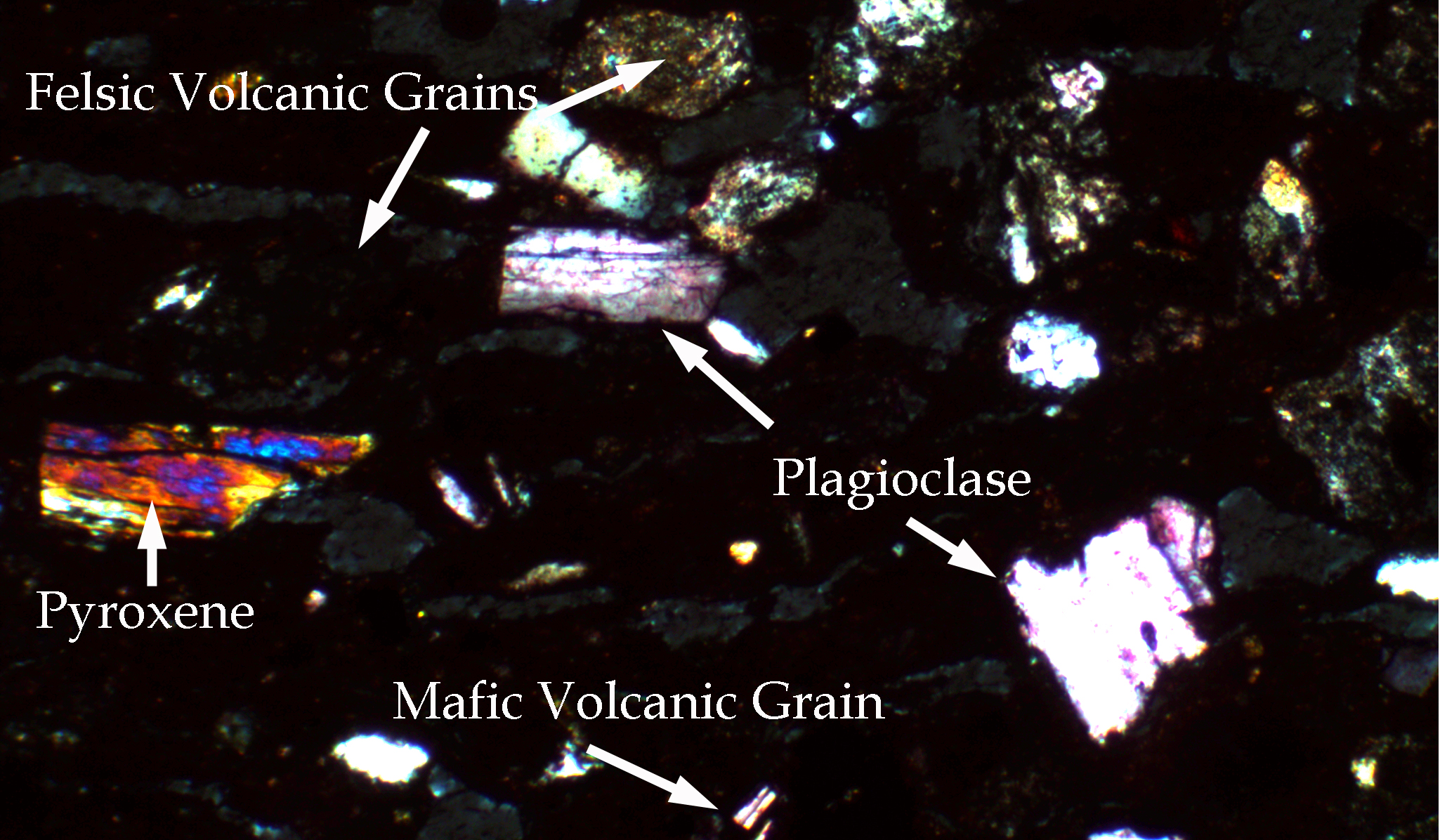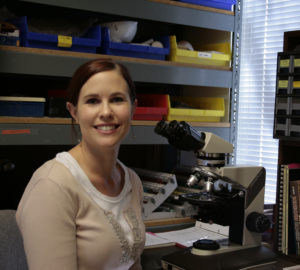
Petrography and Archaeology: Microscopic Fun with Pottery
Dr. Mary Ownby discusses ceramic petrography.
As the resident petrographer for Desert Archaeology, Inc., I am occasionally invited to give guest lectures at field schools, classrooms, and other public venues. I delight in these experiences, but it also reminds me that what I do is largely unknown outside my little world. These opportunities force me to learn ways of explaining my work in an accessible and easily understandable way.
It’s a challenge for sure, but one I strive to overcome with the goal that informing the public of the benefits of the scientific analysis of ceramics, including petrography, is critical to the field of archaeology and its continued support. For this blog, I will attempt to clarify what petrography is and why it is important (and fun)!

Dr. Mary Ownby with the petrographic microscope that is specifically designed to examine rock and pottery thin sections.
Fundamentally, petrography employs techniques borrowed from geology to examine ancient pottery to identify the materials used to manufacture the ceramic objects. A special microscope with polarized light is used to view thin slices (30 microns) of pottery glued to glass slides.
This allows the light from the base of the microscope to penetrate the slide, highlighting the clay (but not the individual clay minerals that are too small) and inclusions in the ceramic paste (i.e., clay plus any added material such as sand, crushed pottery, or plant matter). For sand inclusions, both those that are natural to the clay and those added by the potter, the light from the microscope interacts with minerals and rock fragments in particular ways that facilitate their identification.

Image of thin section under the microscope (cross-polarized light). The image on the left is a sand from a particular petrofacies in the Tucson Basin, the Beehive Petrofacies that has common rhyolite with biotite. The image on the right is a thin section of a Hohokam sherd with this sand used as temper. This shows how we can relate sand temper to sand source for identifying the provenance of vessels and understanding past exchange networks.
Once this information has been acquired, a geological source for the sand and clay can be proposed. Examination of geologic maps of the area where the pottery was found can indicate if outcrops could produce the minerals and rock fragments identified in the paste, suggesting local production (typically considered within 3 km of the site), or if the vessel was made elsewhere. In some cases, the long-distance production source can be identified, thus reconstructing the movement of the vessel and highlighting social and economic processes that played a role in moving pottery from a production location to the area where it was used.
Within southern Arizona in particular, Desert Archaeology, Inc. has collected hundreds of sand samples as comparative material for the sand temper (added material) in the clay paste. By examining these sand samples petrographically and counting the individual minerals and rock fragments (a method known as point-counting), we have quantitative data to characterize each sample. Statistical analysis of the point-counted data creates a model of different areas of sand with specific mineral and rock fragments. The areas are plotted on maps showing the variation of sand in a region available for use by potters to temper clay.
Petrographic analysis and point-counting of the sand temper in sherds provides data that can be examined in the sand model. The results can indicate where the sand temper came from and give a specific area of production for the vessel examined. We call these specific sand resource zones petrofacies, and we have maps of petrofacies for 11 distinct areas in Arizona. Such information means that in some cases we can identify the movement of pottery from source to consumer over short distances and highlight the complex exchange processes taking place prehistorically.

Desert Archaeology is unique in having collected and analyzed almost 1,500 sand samples throughout Arizona. This has allowed us to identify many petrofacies in 11 different regions. For these areas, we can reconstruct social and economic networks based on the movement of ceramics.
Understanding how people acquired pottery, a significant object in their daily life for food storage, preparation, and serving, provides information on past societies, and that is just plain fun!
Resources
Academic papers and book chapters featuring Dr. Ownby’s petrographic work can be found at her Academia.edu page (free site registration required).

To request petrographic services, please email tucson@desert.com.

